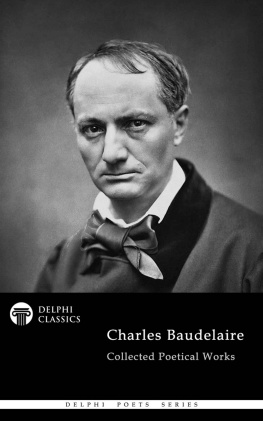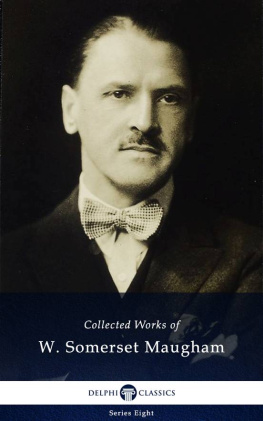The Collected Works of
MAURICE LEBLANC
(1864-1941)

Contents

Delphi Classics 2018
Version 1


Browse our Main Series

Browse our Ancient Classics

Browse our Poets

Browse our Art eBooks

Browse our Classical Music series

The Collected Works of
MAURICE LEBLANC

with introductions by Gill Rossini
www.gillrossini.com
By Delphi Classics, 2018
COPYRIGHT
Collected Works of Maurice Leblanc

First published in the United Kingdom in 2018 by Delphi Classics.
Delphi Classics, 2018.
All rights reserved. No part of this publication may be reproduced, stored in a retrieval system, or transmitted, in any form or by any means, without the prior permission in writing of the publisher, nor be otherwise circulated in any form other than that in which it is published.
ISBN: 978 1 78656 113 8
Delphi Classics
is an imprint of
Delphi Publishing Ltd
Hastings, East Sussex
United Kingdom
Contact: sales@delphiclassics.com

www.delphiclassics.com
Explore classic thrillers with Delphi Classics

For the first time in digital publishing history, Delphi Classics is proud to present the complete works of these thrilling authors.
Browse vintage thrillers
The Arsne Lupin Works

Rouen, Normandy Leblancs birthplace

Rue Saint-Romain in Rouen, c. 1860
The Extraordinary Adventures of Arsne Lupin, Gentleman Burglar

Translated by George Morehead
This collection of eight stories features the debut of Arsne Lupin, the French gentleman-cambrioleur (burglar). The book was released on 10 June 1907 and sales undoubtedly benefited from the Holmes mania that was sweeping France at the time. However, all the tales had previously been published in the then new French magazine, Je Sais Tout, the first appearing on 15 July 1905, with the magazine promoting the character as the famous Arsne Lupin the mysterious burglar whose exploits had been the subject of newspaper stories for months the man of a thousand disguises.[Lupins] creator legitimately enjoys the glory of being Frances answer to Arthur Conan Doyle. Such was the determination to link Leblanc and Doyle and their fictional alter egos, that a photograph appeared in the journal Femina showing the very room in which, as the journalist put it, the French Conan Doyle wrote his Lupin stories. In the end, all things are cyclical Lupin himself has been suggested as the inspiration for a later loveable rogue character, Simon Templar, The Saint, created by Leslie Charteris.
The second story, Arsne Lupin in Prison , is set in Rouen, the town of Leblancs birth and the fortress in which the Baron lives may well have been inspired by images of how the moated castle at Rouen may have looked had it not been dismantled (only the keep is left).
Leblanc was forty-one years old when he was commissioned to write the first Lupin story and had spent most of his adult life crafting a career as a writer after dropping out of law school. He was known best as a regular writer of short stories for magazines, his longer works were regarded as well written, but somewhat lacking in popular appeal. Arsne Lupin is often seen as not just a homage to Sherlock Holmes (first published 1887), but an attempt to kick-start the readership of the new magazine by creating a character of equal charisma, who would encourage repeat purchases to find out what his next adventure would be. Another influence on Leblanc may have been the French anarchist Alexandre Marius Jacob, a burglar with a loveable rogue persona, whose trial was held in March 1905; it is not thought that the English language stories of Raffles, another gentleman thief, written by E. W. Hornung, were an inspiration for Leblanc, as he had never encountered them. There is, however, a tenuous link between Raffles and Lupin; in 1909, the Era journal (14 August) reported that publishers Mills and Boon Ltd were to publish a romantic novel with a hero based on the character of Lupin, written by Leblanc and E. Jephson. The novel was based on the play by the same co-authors, entitled Arsne Lupin . In the stage version, Lupin was played by Gerald du Maurier (father of novelist Daphne du Maurier), who had previously played the part of Raffles on stage. E. W. Hornung, the creator of Raffles (1899 onwards), was the brother-in-law of Doyle; the tendrils of association are as complex as a Lupin plot. In October 1908 in France, another play, Arsne Lupin opened at le Thtre de lAthne in Paris. Andr Brul played Lupin and continued to do so until his death in 1953, presumably without fear of typecasting.
The first story of the collection, The Arrest of Arsne Lupin ( LArrestation dArsne Lupin ), was originally published in Je sais tout, No. 6, on 15 July 1905. Narrated by Monsieur dAndrzy, the story opens as the transatlantic steamer, La Provence , is nearing the end of her journey. On board, as is often the way when a group of strangers are confined during their travels on a vessel or train, a pleasant camaraderie has developed, until the calm is interrupted two days into the voyage by a wireless telegraph message informing the captain that Arsne Lupin, a notorious thief and eccentric gentleman who operates only in the chateaux and salons is on board. We learn that Lupin is in the first cabin and has a wound on his arm. Lupins exploits become the talk of the passenger decks. We learn that his arch-rival is Detective Ganimard of the French police and that Lupin is a master of disguise: in turn a chauffeur, detective, bookmaker, Russian physician, Spanish bull-fighter, commercial traveller, robust youth, or decrepit old man. DAndrezy and the young woman who is the darling of the ships social scene, Miss Nelly, join in the hunt. Meanwhile, some precious gems are stolen from their settings and the Lupin Mania reaches fever pitch, with accusations flying
Next page

























